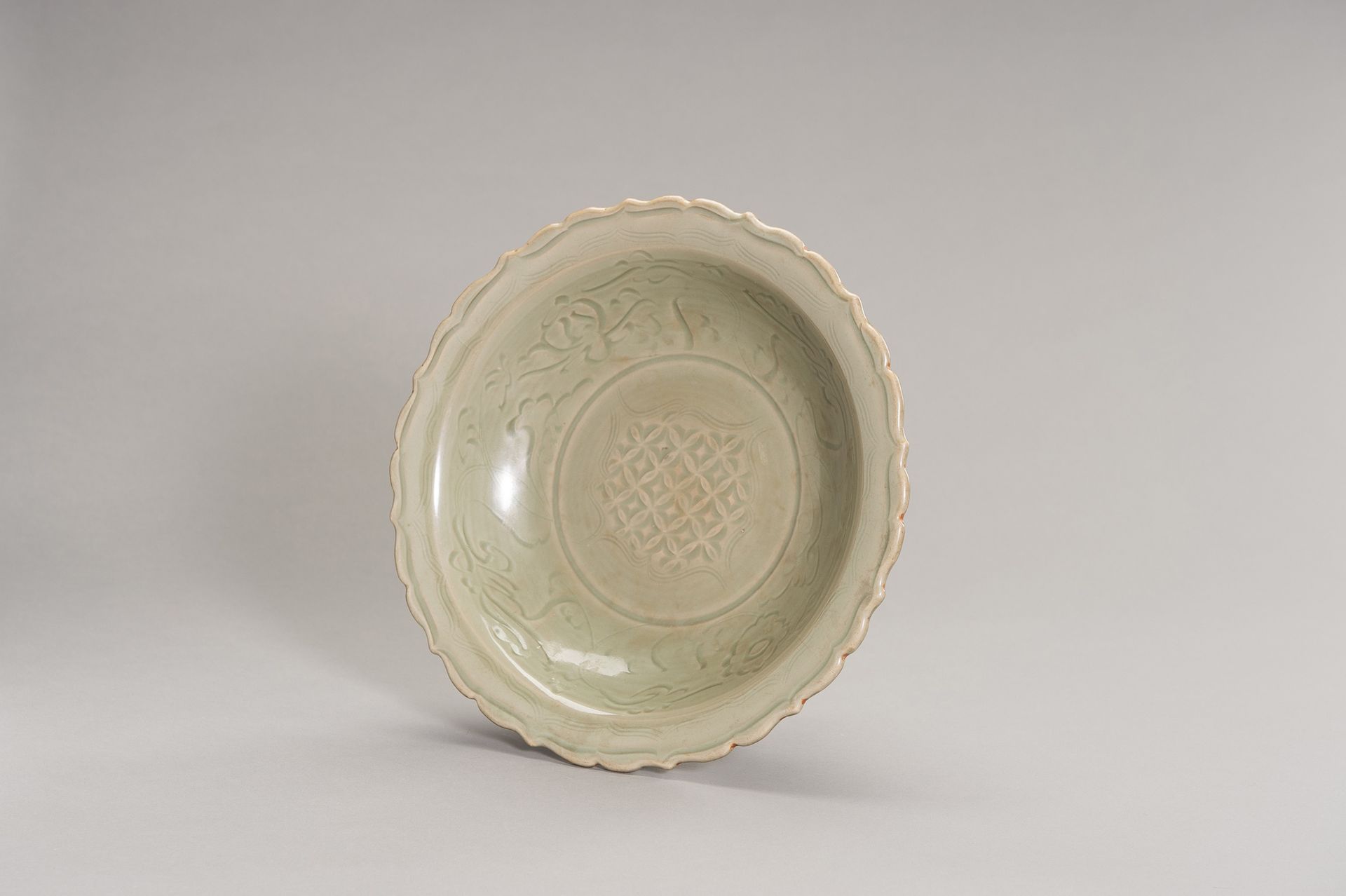Description
A LARGE LONGQUAN CELADON BARBED-RIM PLATE
A LARGE LONGQUAN CELADON BARBED-RIM PLATE China, Ming Dynasty (1368-1644). The plate is incised to the center of the interior with a cusped basket-weave patterned panel surrounded by stylized floral scroll below a petal-barbed rim, covered with an even glaze of sea-green tone, continuing over the foot rim where an unglazed ring on the base has burnt to a dark orange. Condition: With surface wear and scratches, minor manufacturing flaws, three hairlines to upper rim and two small perforations to foot rim. Provenance: German private collection, according to the current owner acquired from an Istanbul private collection. Weight: 2400 g Dimensions: Diameter 32.5 cm Auction result comparison: Compare a closely related Longquan celadon barbed-rim dish, also dated to the Ming dynasty and of similar size and form, at Christie’s London in The Art of China on 21-28 May 2020, lot 31, sold for GBP 5,250.
You may also like
